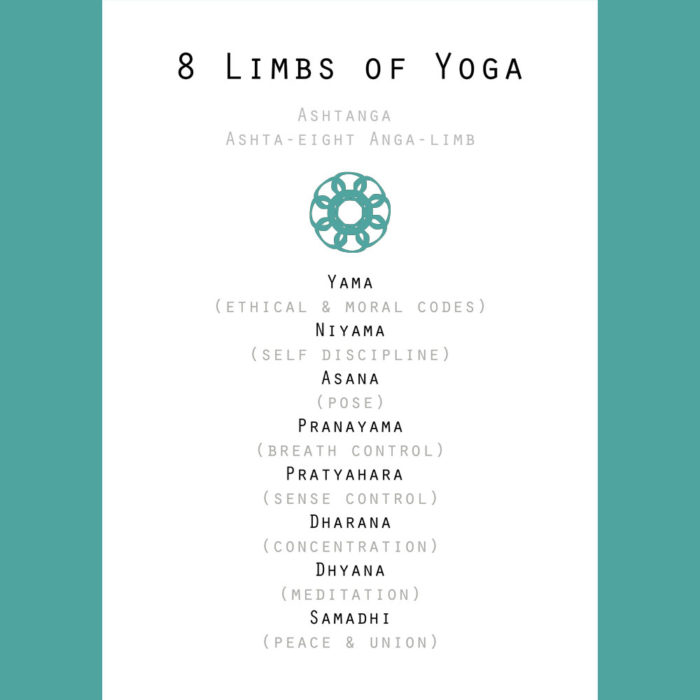Since my first yoga teacher training, I’ve often reflected on how I can practise, study and teach some of the other limbs of yoga as well as famous limb number three — asana (yoga poses).
I liked what one of my teachers (Krishna) in India said — that you can take a small section from the Bhagavad Gita, the eight limbs of yoga or any of the ancient yoga texts and focus on what that one sentence, description or definition means to you over a period of time.
This is what I’m drawn to write about and practise in this blog — more for my own learning to begin with, which might also be interesting to you too.
What are the 8 limbs of yoga?
1. Yama – five moral codes
Ahimsa – non violence
Satya – truthfulness
Asteya – non stealing
Brahmacharya – directing energy in the right way
Aparigraha – cultivating simplicity
2. Niyama – five observances
Saucha – cleanliness
Santosha – contentment
Tapas – self discipline
Svadhyaya – self study and reflection
Ishvara Pranidhana – surrender or devotion to a higher power
3. Asana – pose
4. Pranayama – breath control
5. Pratyahara – sense control
6. Dharana – concentration
7. Dhyana – meditation
8. Samadhi – liberation or union
I’ve given an overly simplified definition of the eight limbs of yoga above (which vary in definition according to different texts), but what I hope to do is to reflect and absorb myself in what the different limbs mean to me. I’ll be starting with the first Yama which is Ahimsa (non violence), and finding new ways to bring the different limbs of yoga into my teaching for those who are interested.
In addition to reflecting on the eight limbs of yoga, I’ll also be looking at the four paths of yoga, the history, the differences and similarities between different styles of yoga from my personal experience, and what exactly yoga means to me and according to definitions from ancient texts.
I’m interested in delving deeper into the origins of yoga and how yoga helped to shape Buddhism. And I’m interested in how and why 20th century gymnastics shaped the more dynamic styles of yoga practised today. The list goes on. For now though, welcome to my new site and thank you for reading my first blog post. I’ll be taking everything one step at a time and enjoying the process of practising, teaching and learning more about yoga in its entirety.

